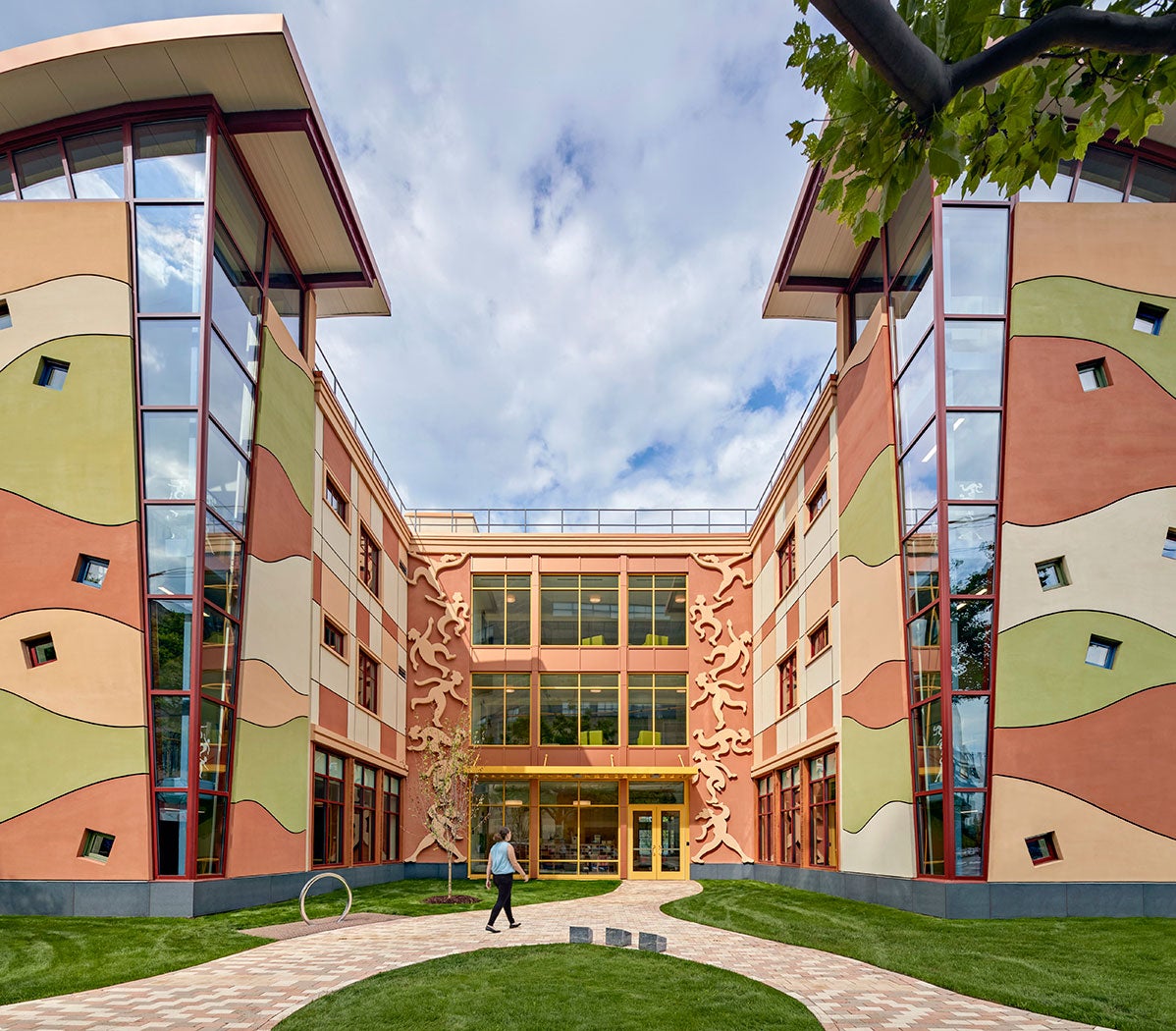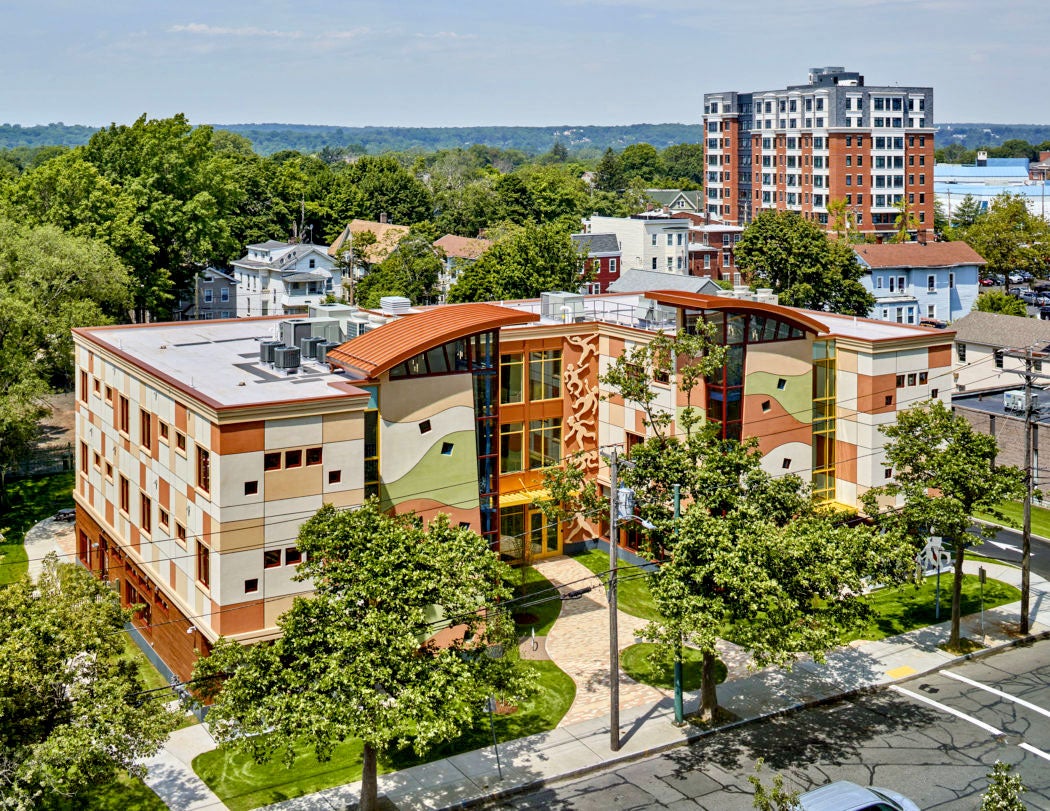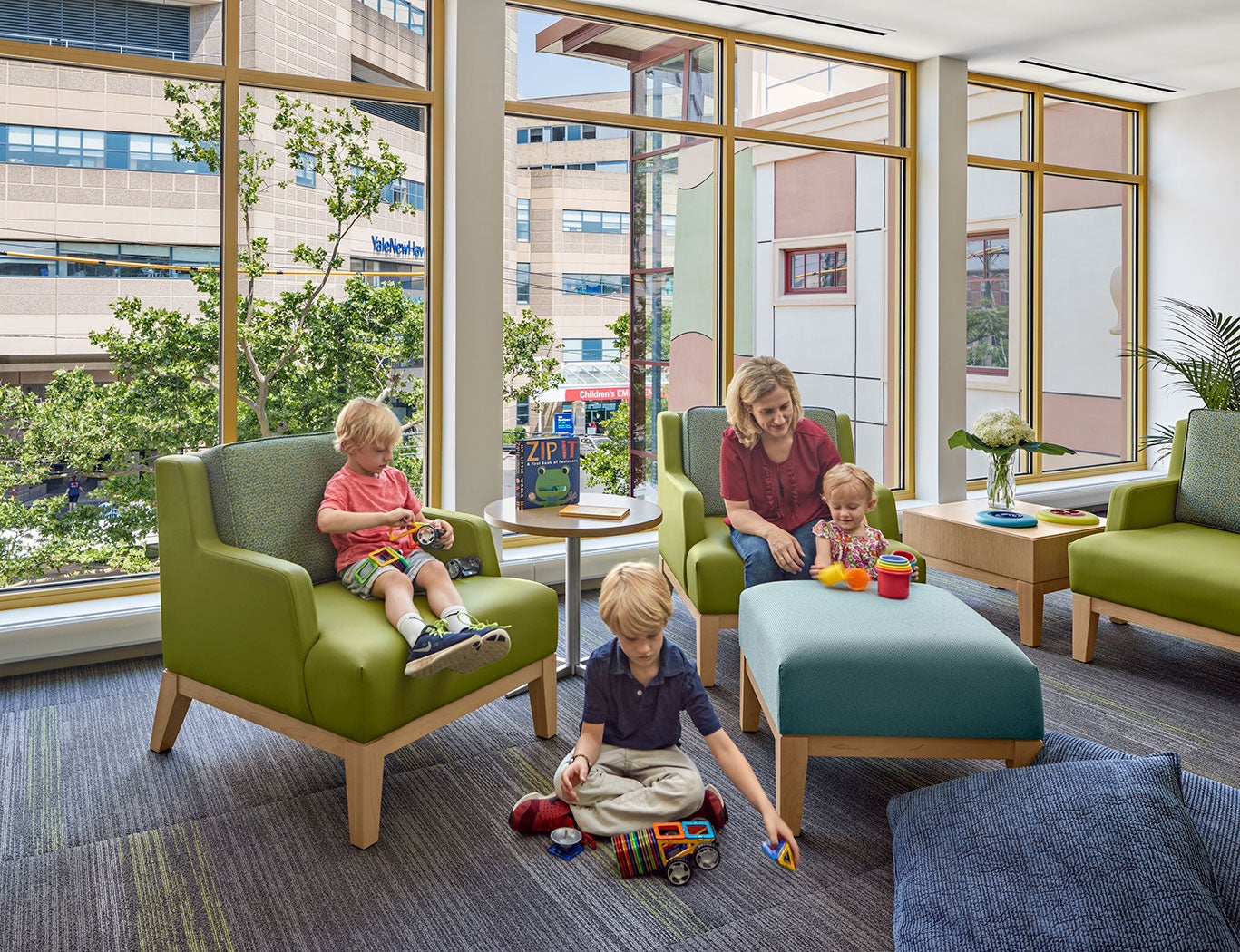New Ronald McDonald House's design keeps it cozy

The new Ronald McDonald House embodies the charity’s commitment to providing services to support the families of children receiving life-saving care at Yale New Haven Hospital. The U-shaped building’s central courtyard is framed by two stair towers, and the stucco and glass façades have architecturally integrated sculptures of people who appear to be holding up the towers — a reference to the charitable group’s themes of support and community.
There’s no place like home, but the designers of the new Ronald McDonald House at Yale New Haven (Conn.) Children’s Hospital made every effort to create a homelike atmosphere of comfort and well-being for the families of those receiving care at the hospital.
Phase 1 of the new facility provides 18 guest rooms with a private bath in each — offering a level of privacy to resident families that previously was unavailable — in addition to two private “respite rooms,” where parents can relax quietly or hold private conversations. When all three phases are completed, the 28,000-square-foot facility will house 30 bedrooms.
The new facility, designed by Svigals + Partners and built by contractor Petra Construction Corp., replaces an older facility with fewer rooms. The new residence is the result of a collaboration with the nonprofit Ronald McDonald House Charities of Connecticut and Western Massachusetts.
The new Ronald McDonald House embodies the charity’s commitment to providing services to support the families of children receiving life-saving care at the hospital. It also reflects Svigals + Partners’ vision of “a world of prosperous, compassionate communities.”

The first phase of the 28,000-square-foot building provides 18 guest rooms with a private bath in each, offering a level of privacy to resident families that was previously unavailable, in addition to two private respite rooms where parents can relax quietly or hold private conversations.
“Our mission is to provide more than just a home away from home,” says Stocky Clark, executive director of Ronald McDonald House Charities of Connecticut and Massachusetts. “We work to keep families together as they endure the trauma of their lives, and the Svigals + Partners team and Petra Construction are helping us to do just that.”
The new building offers a welcoming and natural setting in an urban context, providing both privacy and a sense of community for residints. The new Ronald McDonald House is located directly across the street from the major hospital’s entrance.
With its colorful façades featuring noteworthy sculptures, the new house is a striking addition to the southwestern-most Hill neighborhood of New Haven.
“For all of us involved in the creation of the new Ronald McDonald House, we had a single aim: to create a home where the families would feel cared for,” says architect Barry Svigals, FAIA, the firm’s founder and also the artist behind the integrated sculptures.
One of the design objectives was for families to feel comforted before entering the new building. “We asked Svigals + Partners to show on the outside of the building what goes on inside,” Clark says. “They succeeded magnificently.”
The U-shaped building’s central courtyard is framed by two stair tower elements, creating a welcoming main street side entrance. With its architecturally integrated sculptural forms, the building depicts an image of people who appear to be holding up the towers, a reference to the charitable group’s themes of support and community.
The rear of the three-story building, with integrated sculpted forms of frolicking children, is defined by an exterior patio and play area for children, cantilevered sunrooms on the upper floors, and a one-story glass façade element to open up the shared living and dining areas to views and sunlight. Alternating materials of glass and colorful stucco play off the courtyard greenery.

The design strives for connections between indoors and outdoors, bringing in natural daylight and providing a connection to the landscaped natural environment. Working with interior design group CAMA Inc., the architects created spaces promoting an overall sense of well-being, with gathering spaces offering higher ceilings. When all phases are completed, the new facility will house almost three times as many families as the location previously accommodated.
The design strives for connections between indoors and outdoors, bringing in natural daylight and providing a connection to the landscaped natural environment. The efforts of interior design group CAMA Inc. help to define an overall sense of well-being.
Gathering spaces with higher ceilings allow light to penetrate deep into the building.
The hallways likewise offer transparency, connecting them visually to exterior porches and providing views to the outside. Colorful walls and interior furnishings emphasize the warmth and openness of the architecture, while natural finish materials contribute to the atmosphere.
The staged construction of the three-phase project will allow families to occupy the facility while work continues on the outside.




